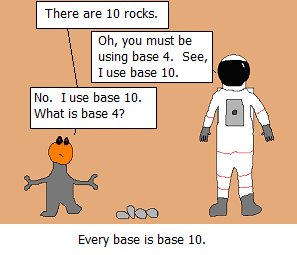Interesting Problems
Here are some interesting math problems I've come across during my time at IISER-K. It may help to first consider a special case, say $n = 1$, and then extend the idea to solve the general case. I'll put up solutions when I find time. Happy solving :)
-
$\text{Can you find a continuous function $f \colon \mathbb{Q} \to \mathbb{Q} $ such that $ f(f(q)) = -q $ for all $ q \in \mathbb{Q}$ ?}$
This problem was originally posed to me by a person in the
#mathchannel on Libera. -
$\text{A needle of length $ n $ where $ n \in \mathbb{N} $ is dropped onto a square lattice.}$
$\text{What is the probability that the needle touches exactly $ n $ unit-squares of the lattice?}$To be precise, you may assume that the position of the tip of the needle is uniformly distributed over $[0, 1) \times [0, 1)$, and the angle is uniformly distributed over $[0, 2\pi)$.
-
$\text{Let $[n]$ denote $\{1, 2, \dots, n\}$. What is the largest integer $m$ for which there exists a}$
$\text{collection $C = \{C_1, C_2, \dots, C_m\}$ of distinct subsets of $[n]$ such that $C_i \cap C_j$ contains}$
$\text{an even number of elements for every $C_i, C_j \in C$?}$This problem is called the eventown problem. For a hint, try modeling the problem with a vector space over a finite field . For a further hint, look at the space $\mathbb{F}_2^n$ with the standard inner product.
-
$\text{Let $J_n$ be the unit $n$-ball centered at the origin, i.e., $J_n = \{p \in \mathbb{R}^n : |p| \le 1 \}$. You form}$
$\text{a (possibly finite) sequence of points $(p_i)$ by randomly picking uniformly distributed}$
$\text{points from $J_n$. You stop this process as soon as you pick a point $p_N$ such that}$
$\text{$|p_N| \gt |p_{N-1}|$, and when this happens you obtain a sequence of length $N$. What is the}$
$\text{expected length of the sequence you obtain?}$You may assume that the volume of $J_n$ is equal to $\dfrac{\pi^\frac{n}{2}}{\Gamma(\frac{n}{2} + 1)}$ where $\Gamma$ denotes the gamma function.
